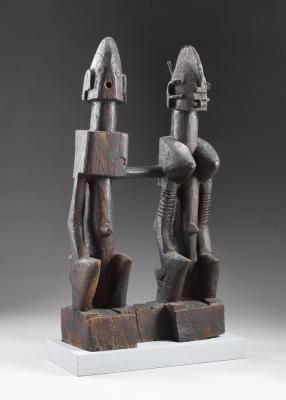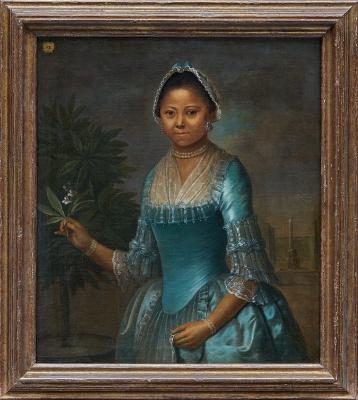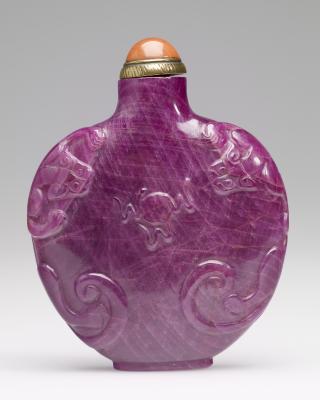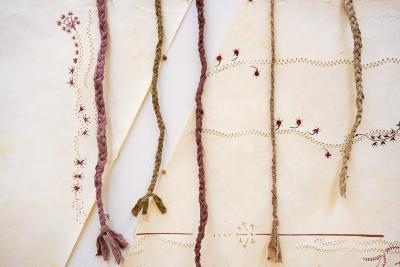Uncovering and investigating
Mariah Coulibaly's ongoing research into works from the AGO's Frum Collection of African Art.
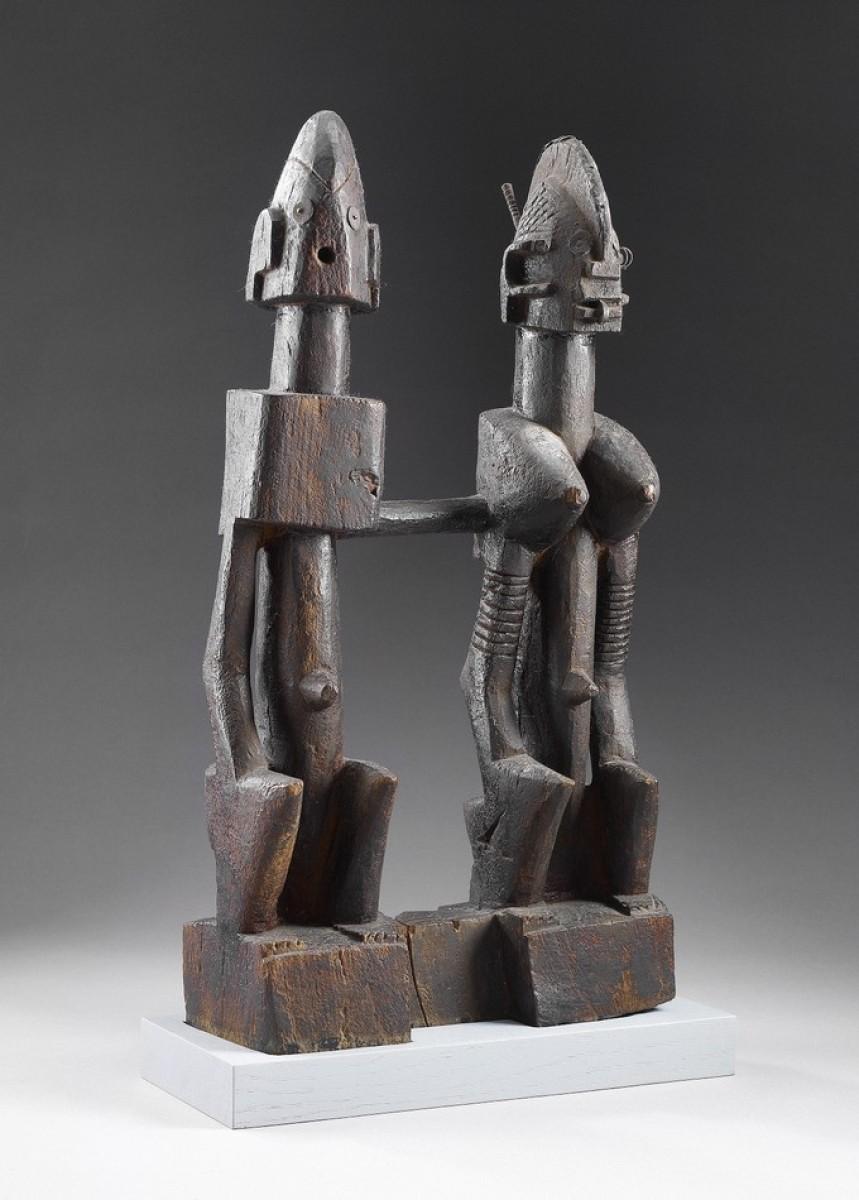
Dogon peoples. Seated Couple, possibly 19th century or earlier. Wood with applied coatings, copper alloy, ferrous metal, Overall: 58 x 31 x 14 cm. Gift from the Frum Collection, 1999. © Art Gallery of Ontario 99/472
The AGO Frum Collection of African Art consists of more than 100 sculptural artifacts from various regions of the African continent, made mostly throughout the 19th and early 20th centuries. This collection is in the care of the department of the Arts of Global Africa and the Diaspora, which focuses on acquiring, exhibiting and building programming around art from Africa and the African diaspora.
For the majority of works in the Frum Collection, only approximate information about their creation is known. Missing is information about the materials used, the artists and an understanding of their cultural significance. Led by the Arts of Global Africa and the Diaspora department head, curator Dr. Julie Crooks, the AGO is taking significant steps to learn more about each piece in the collection. In 2022, researcher Mariah Coulibaly was hired to spearhead this important work and has since begun a precise and rigorous investigation.
We spoke with Coulibaly to learn more about her work, and her findings thus far.
Foyer: Can you briefly describe the research you are conducting with the Frum Collection at the AGO?
Coulibaly: I am conducting retrospective collection research on the hundred or so objects of the Frum Collection. It is the first time a project of this scale is implemented, which requires time and dedication. My line of research is more oriented on significance and, I have the chance of working in tandem with researcher Samantha Muir, who is exclusively focusing on provenance (a term for understanding an artwork's history of ownership).
Currently, I am focusing on the significance of eight rare terracotta sculptures from the Inland Niger Delta Region (in the centre of Mali), dating back to the 14th-17th centuries. I am also gathering information on the cultural groups the works in the Collection originated from and their location on the continent. Selecting and digitalizing important archives related to the Frum Collection since the 1990s is also part of my mission. It provides us with precious insights into the way it was gathered.
Foyer: Can you share some details about the technical process of your research? What are some of the first things you examine and investigate about an object?
Coulibaly: I work simultaneously at the micro and macro levels to obtain the most detailed picture possible. My motto is to always proceed with utmost care. It applies to everything I do, from manipulating the artworks to double-checking and cross-referencing my sources.
One of the first things I do is meticulously observe the object I am working on. Indeed, sometimes small details like the placement of scarification on a face, a hairstyle or the presence of accessories (like jewels, tools, hats, etc.) can help to tie an artwork to a specific group or subgroup of a given people. Furthermore, when researching the significance of African works of art, it is crucial to perform as many checks as possible. The investigation of "African Art" is rooted in colonialism, and the early literature on the subject is tainted by damaging ideas and apriorisms. Unfortunately, some survived even though this field of study took a different trajectory in the second half of the 20th century, and many scholars from the African continent have been able to re-establish the truth on many subjects ever since.
Foyer: At this point in your research, are there any exciting findings you can share with us?
Coulibaly: The only thing I can share so far is that we suspect that some objects are much older than we imagined. We are currently in discussion with the conservators of the Gallery regarding the possible tests to run to scientifically date a selection of four works from West and Central Africa.
These discoveries are the first, but I am certain they won't be the last to be made about the exceptional works in the Frum Collection. There is still so much to learn about their significance in the societies that created them, the artists behind their shapes, and their respective journeys.
Foyer: In your opinion, why is this type of research so important for art museums like the AGO to conduct?
Coulibaly: To me, this is a necessary work for any museum with objects of African art in their collection. It is especially important for the AGO because it is not an ethnographic museum, so our mission is to present the cultural and aesthetic importance of the African works on display. More knowledge of our collections helps the work of our curators and improves the access and the quality of education we can provide to the public. To do so, we need continuing support to make sure that this research can keep on being conducted.
This study provides us with ways of understanding how what I like to call "Classical African artworks" were able to inspire art movements around the world and how to this day, they still are a source of inspiration for contemporary artists.
Select works from the Frum Collection are on view now on Level 2 (gallery 248) at the AGO. Stay tuned for more information as this important research continues.
